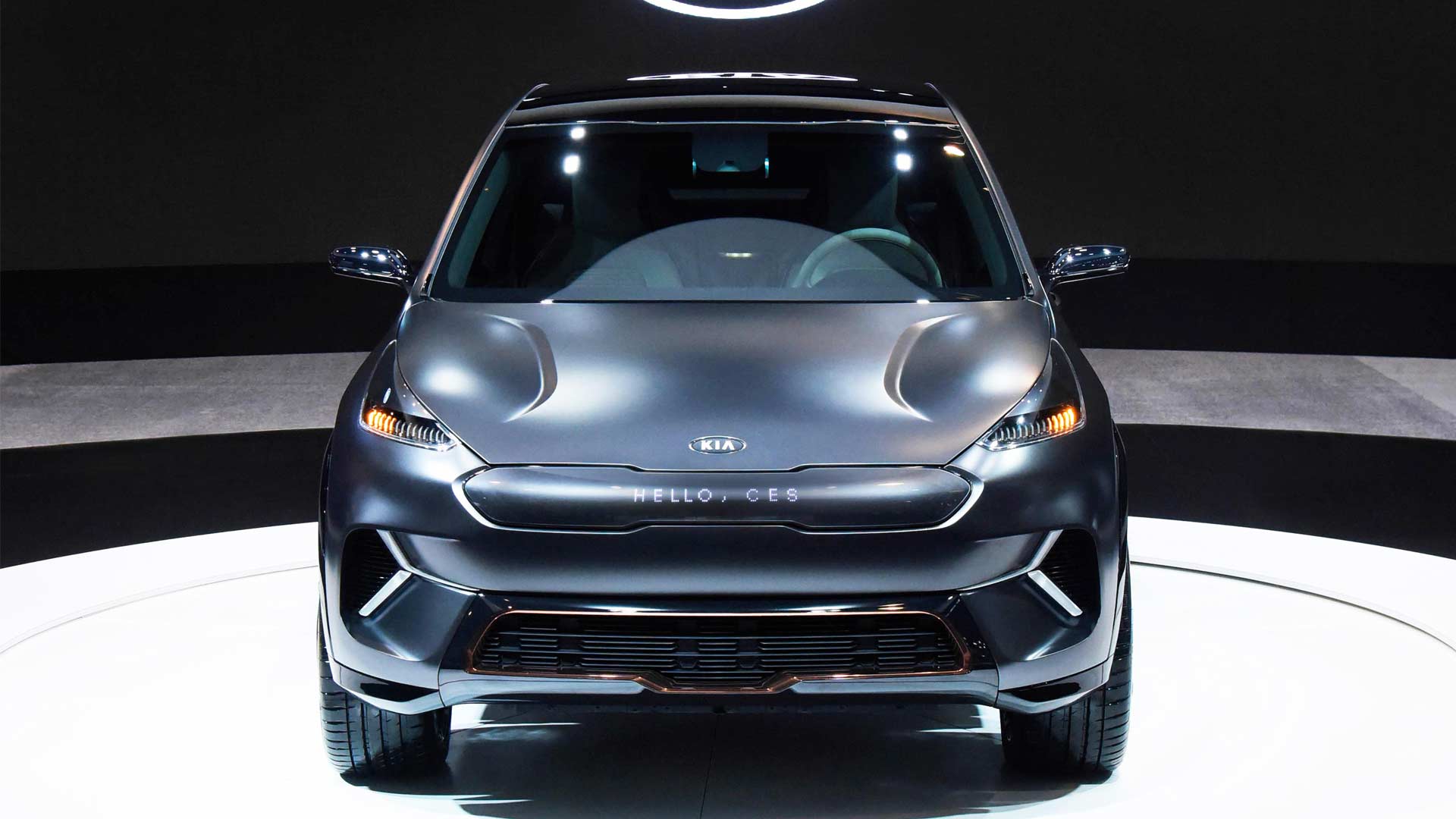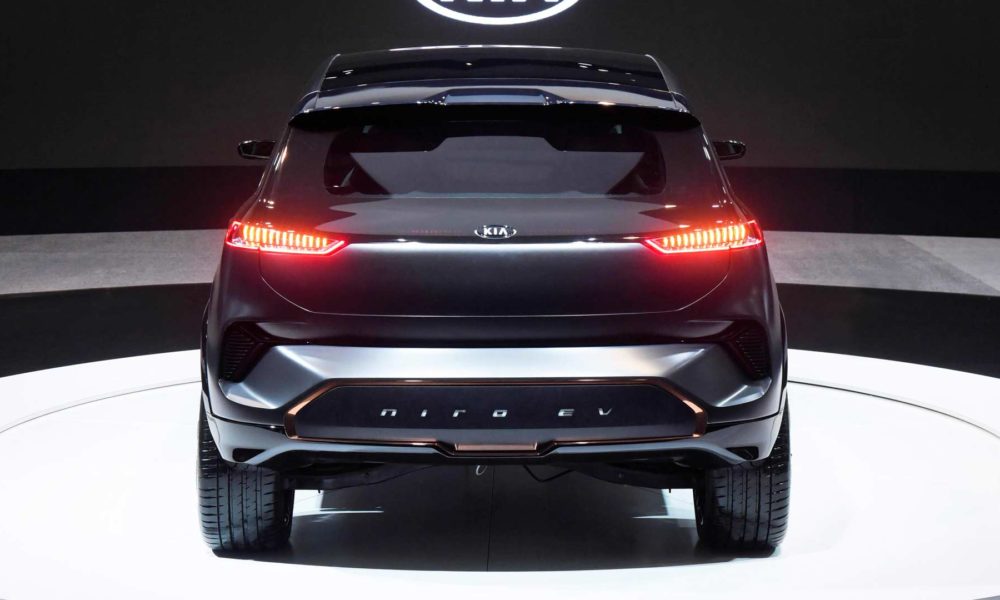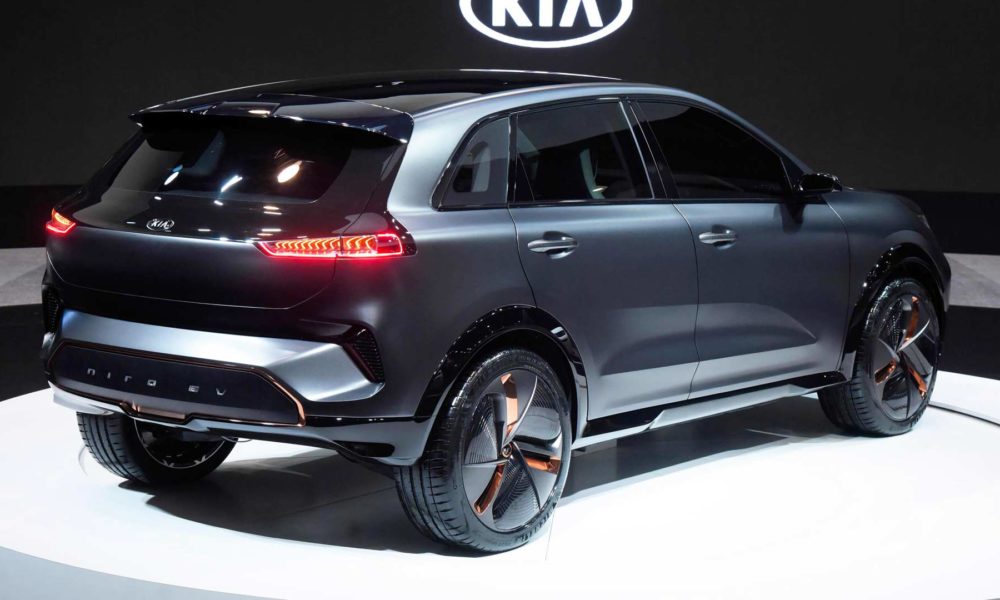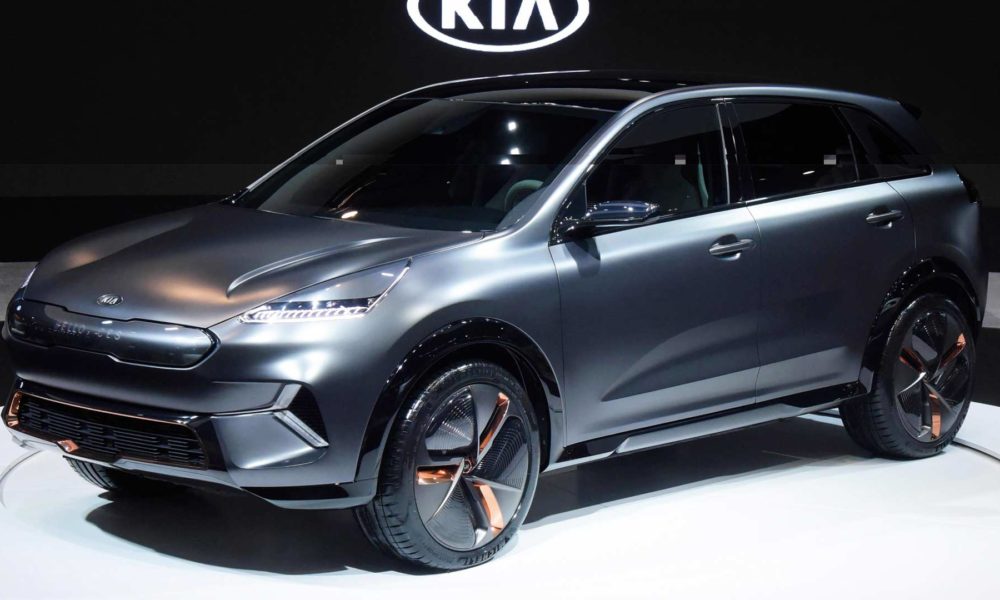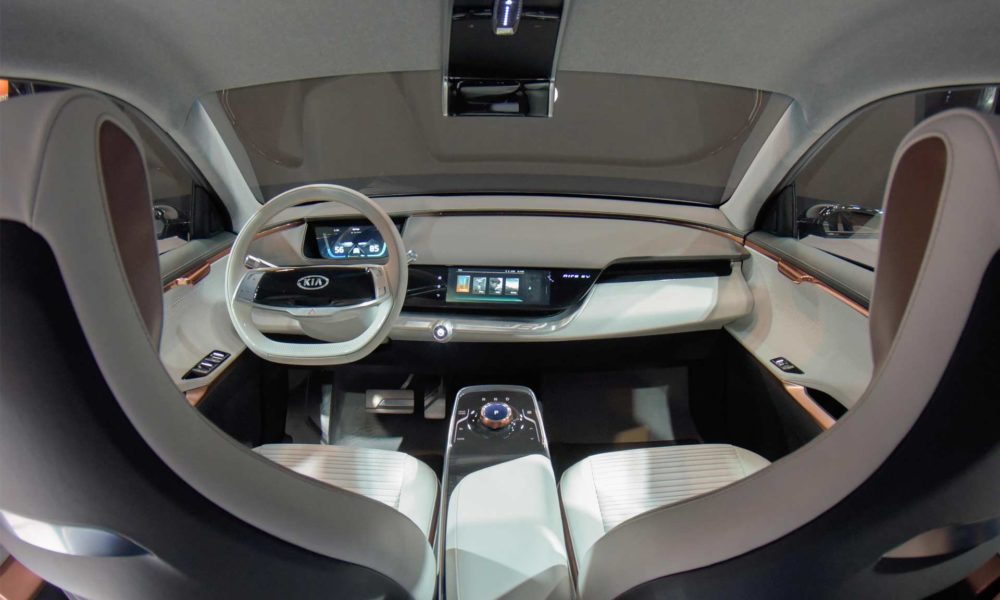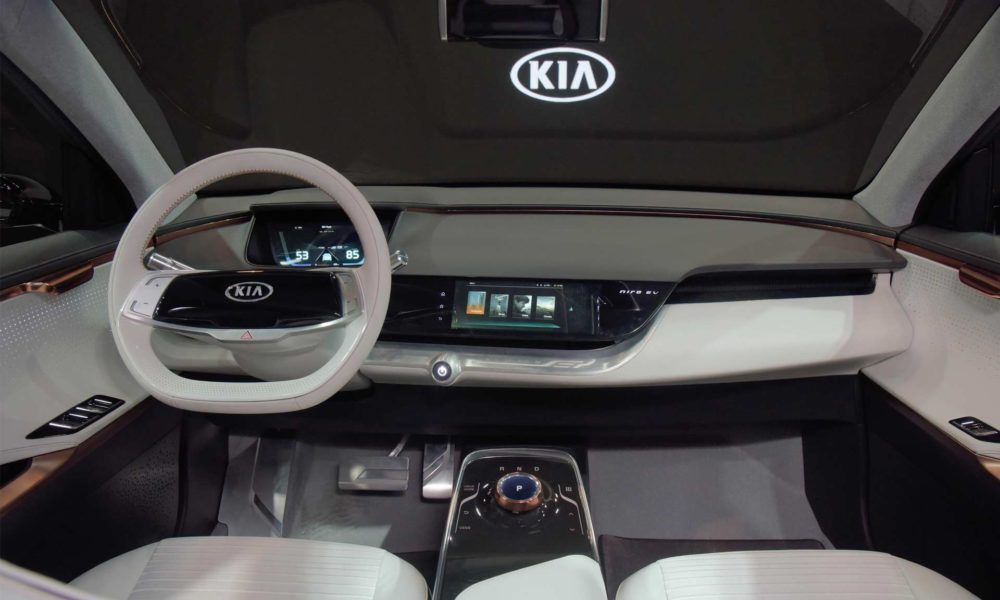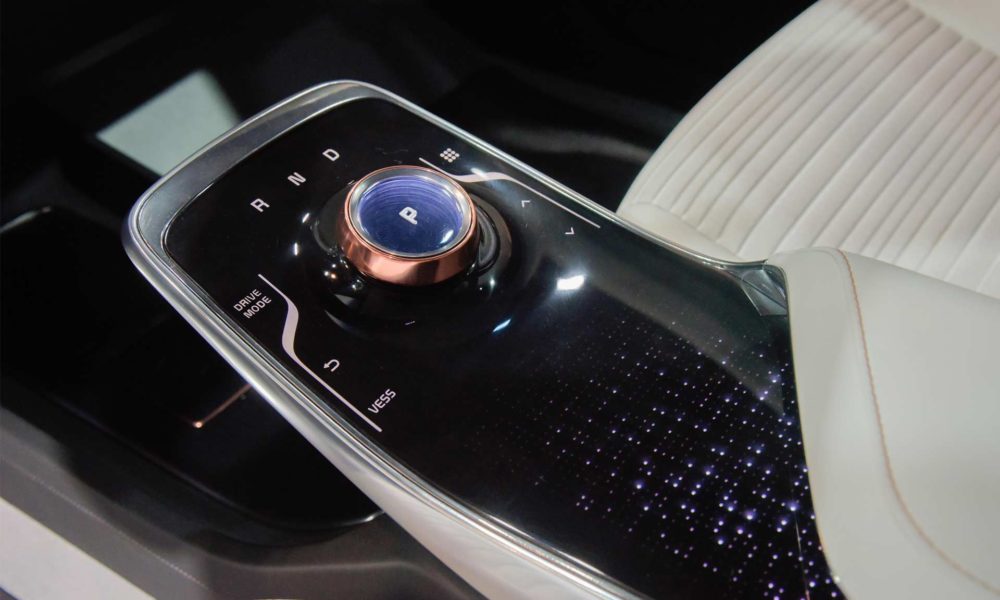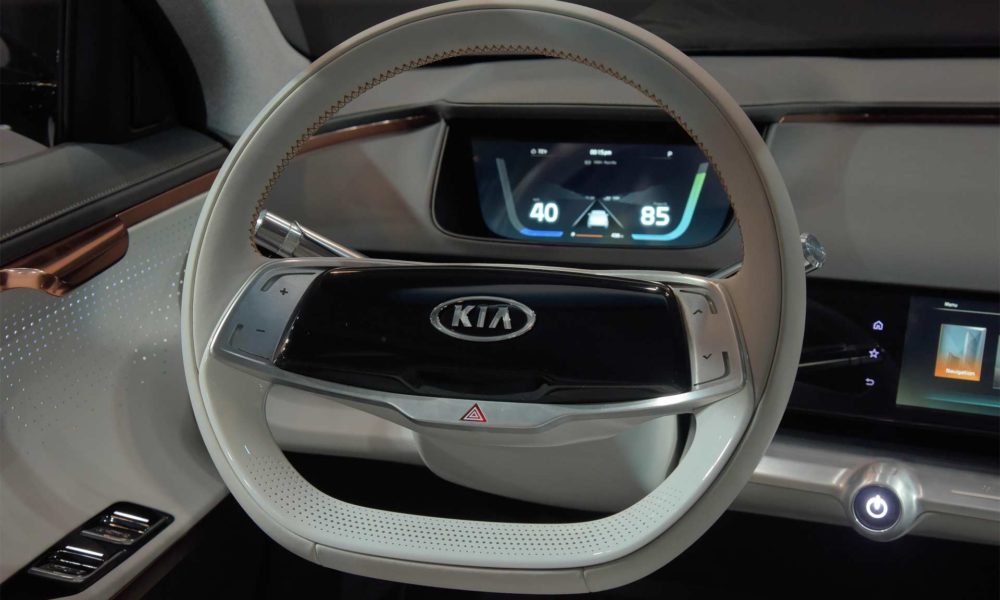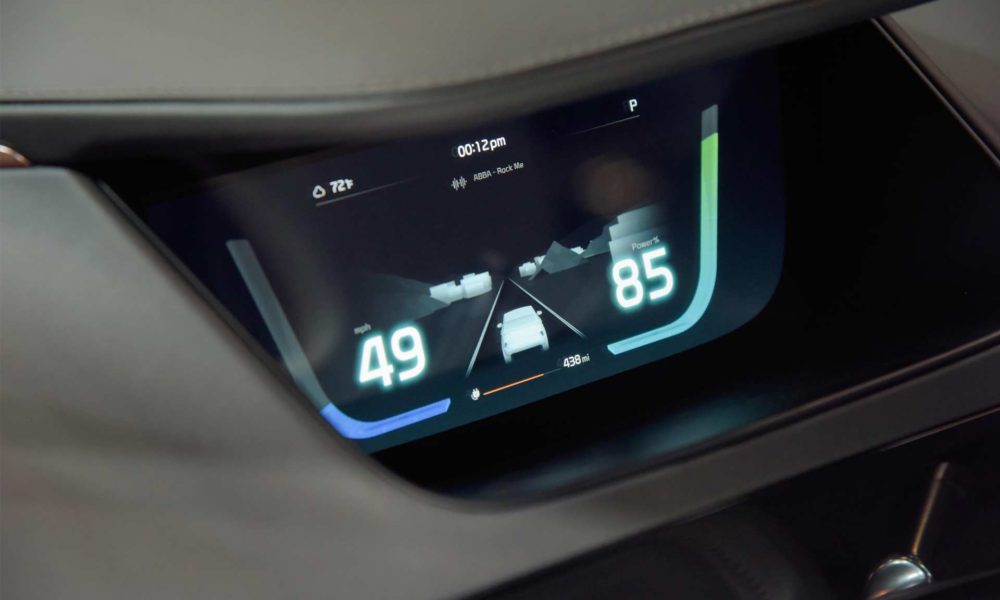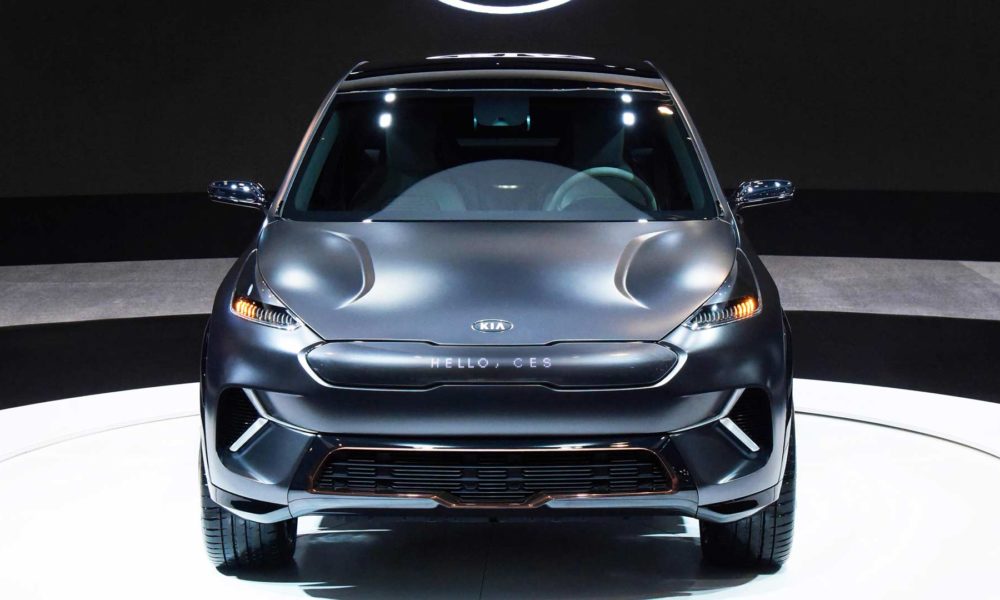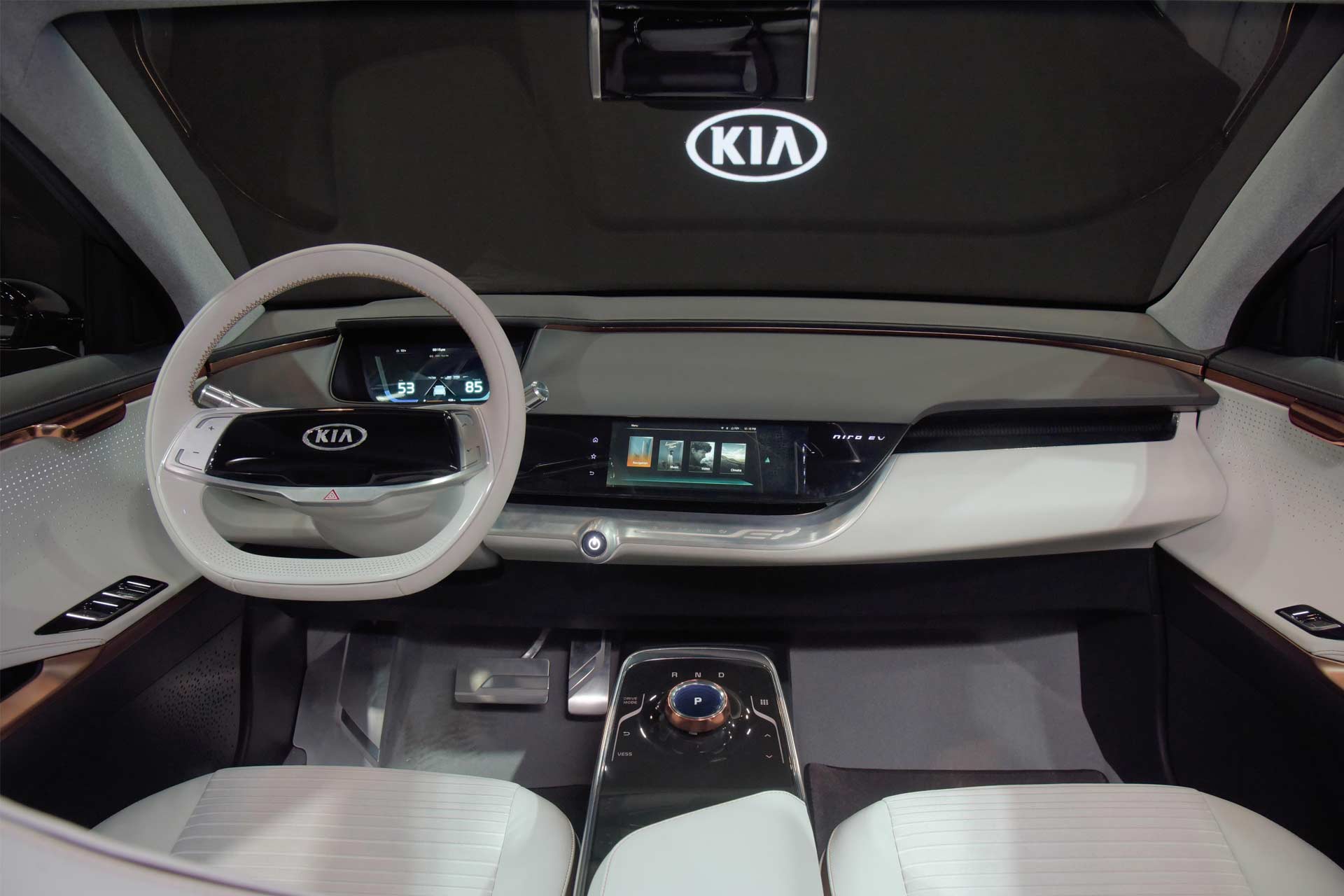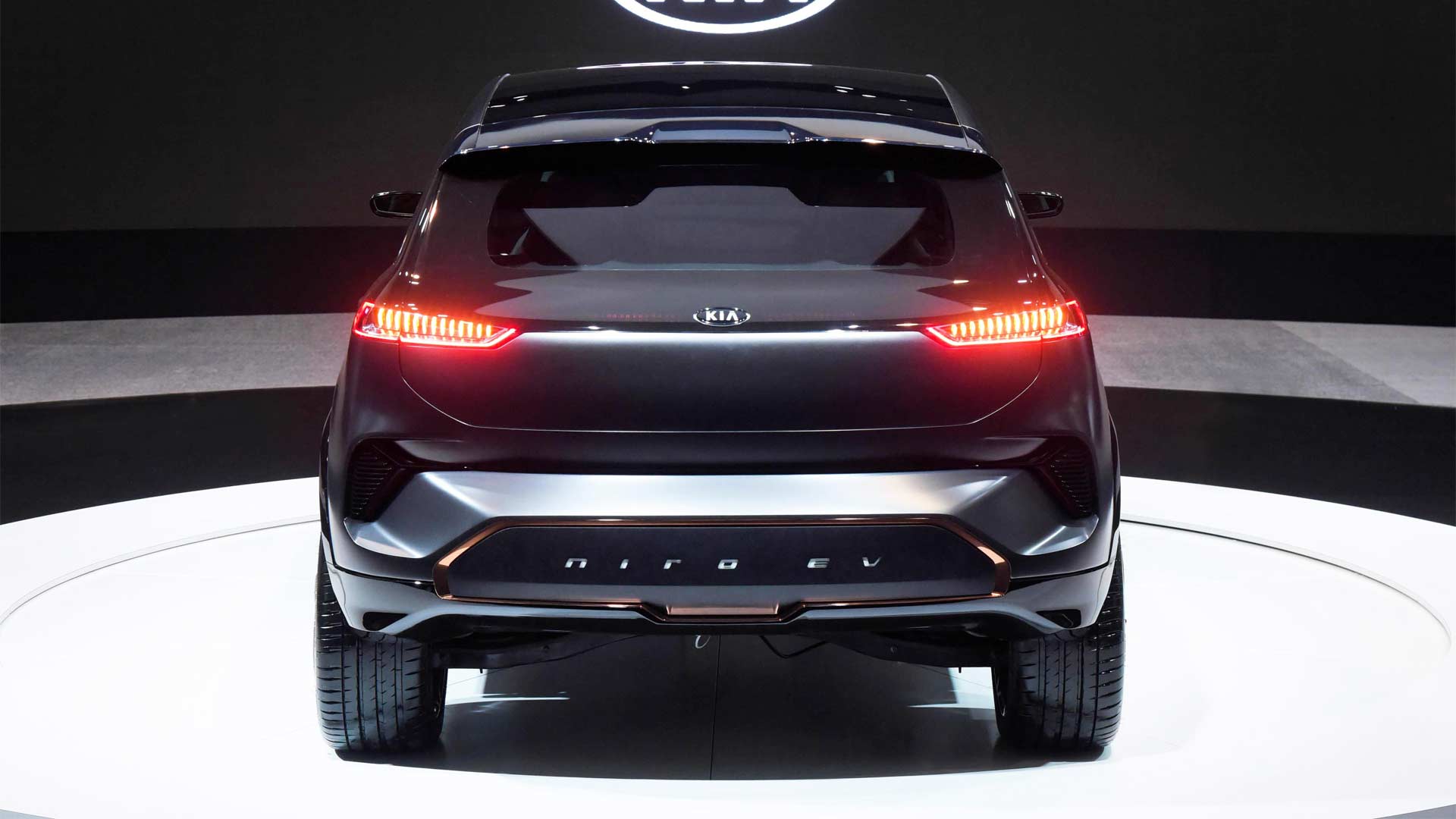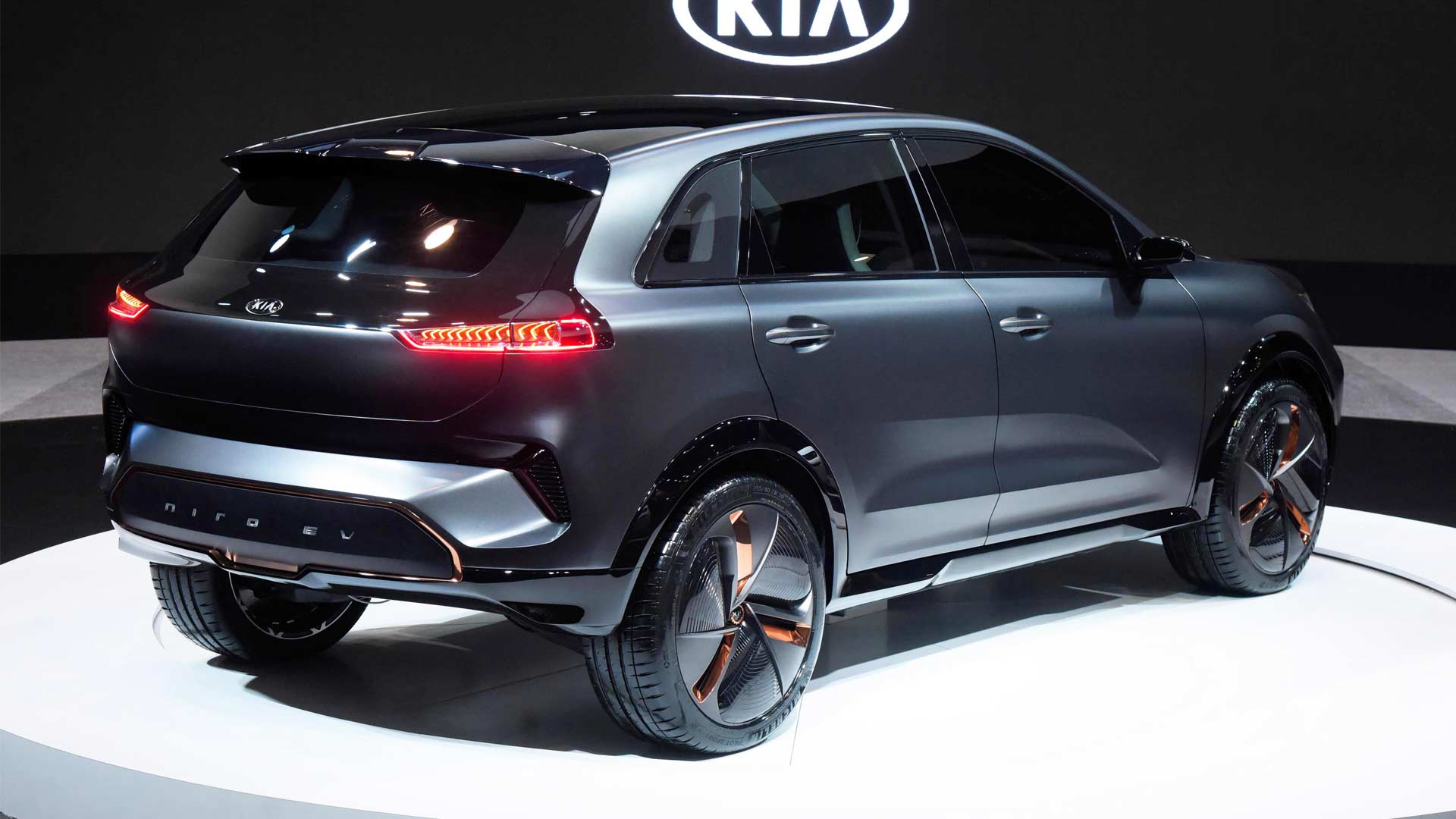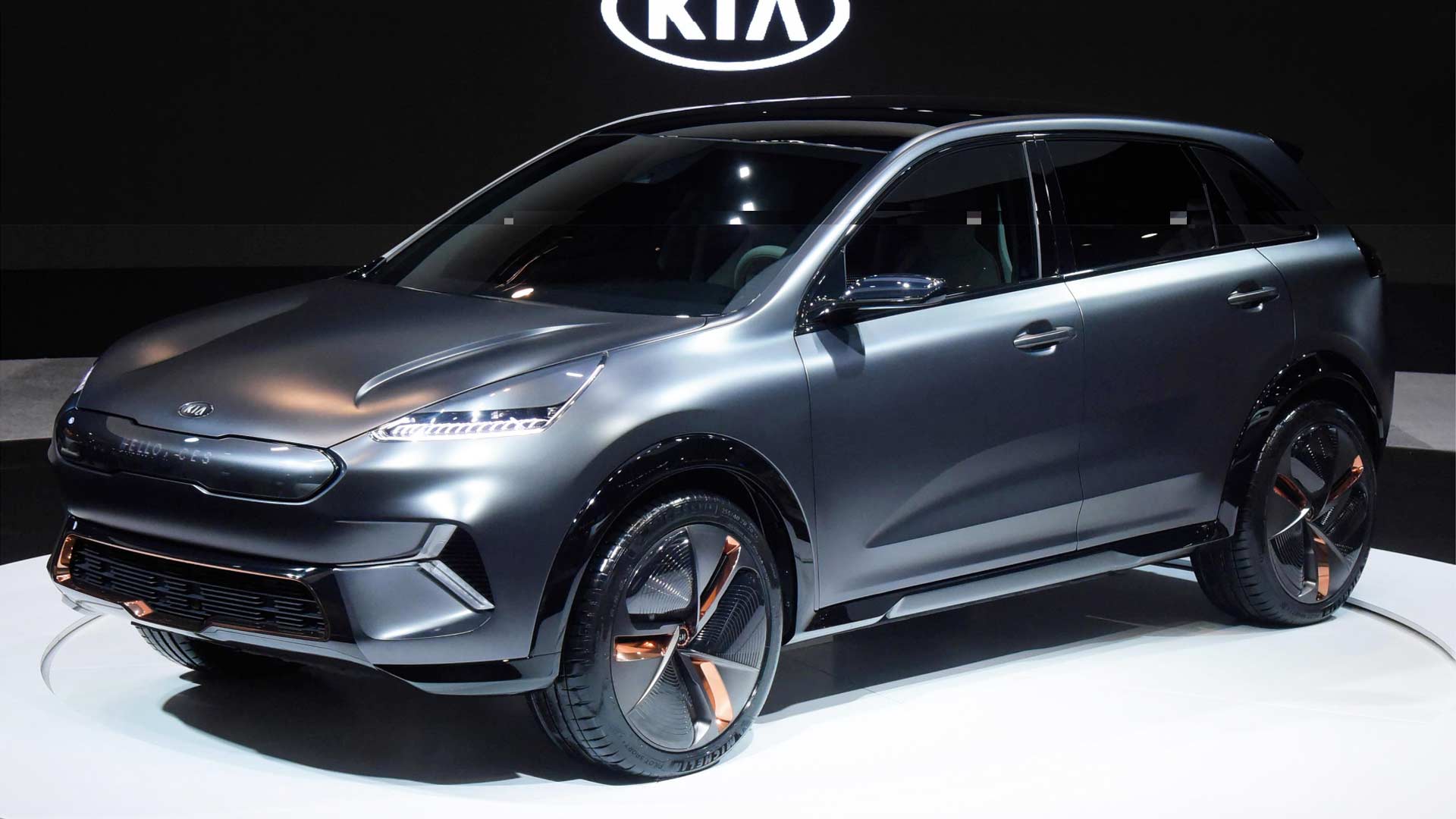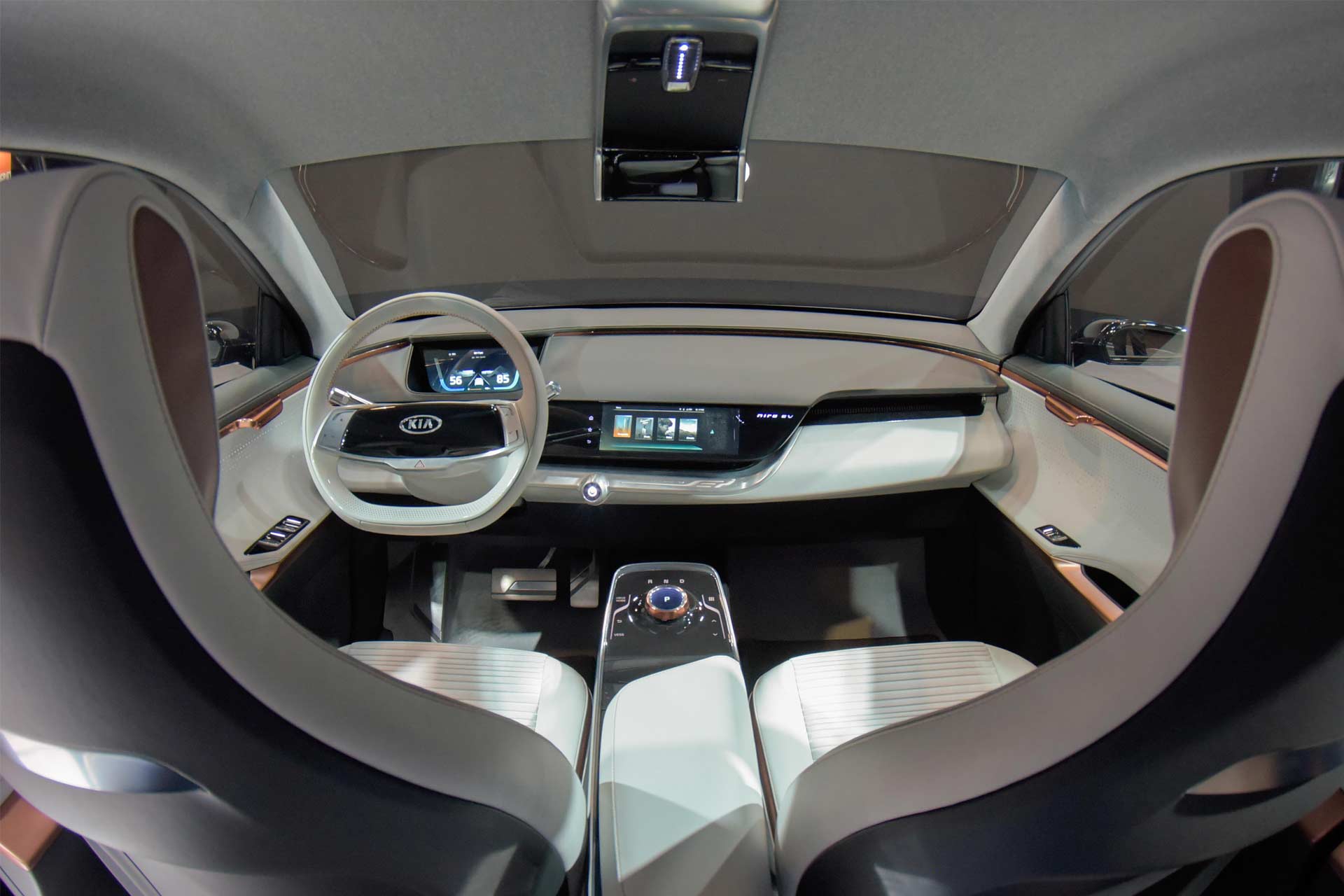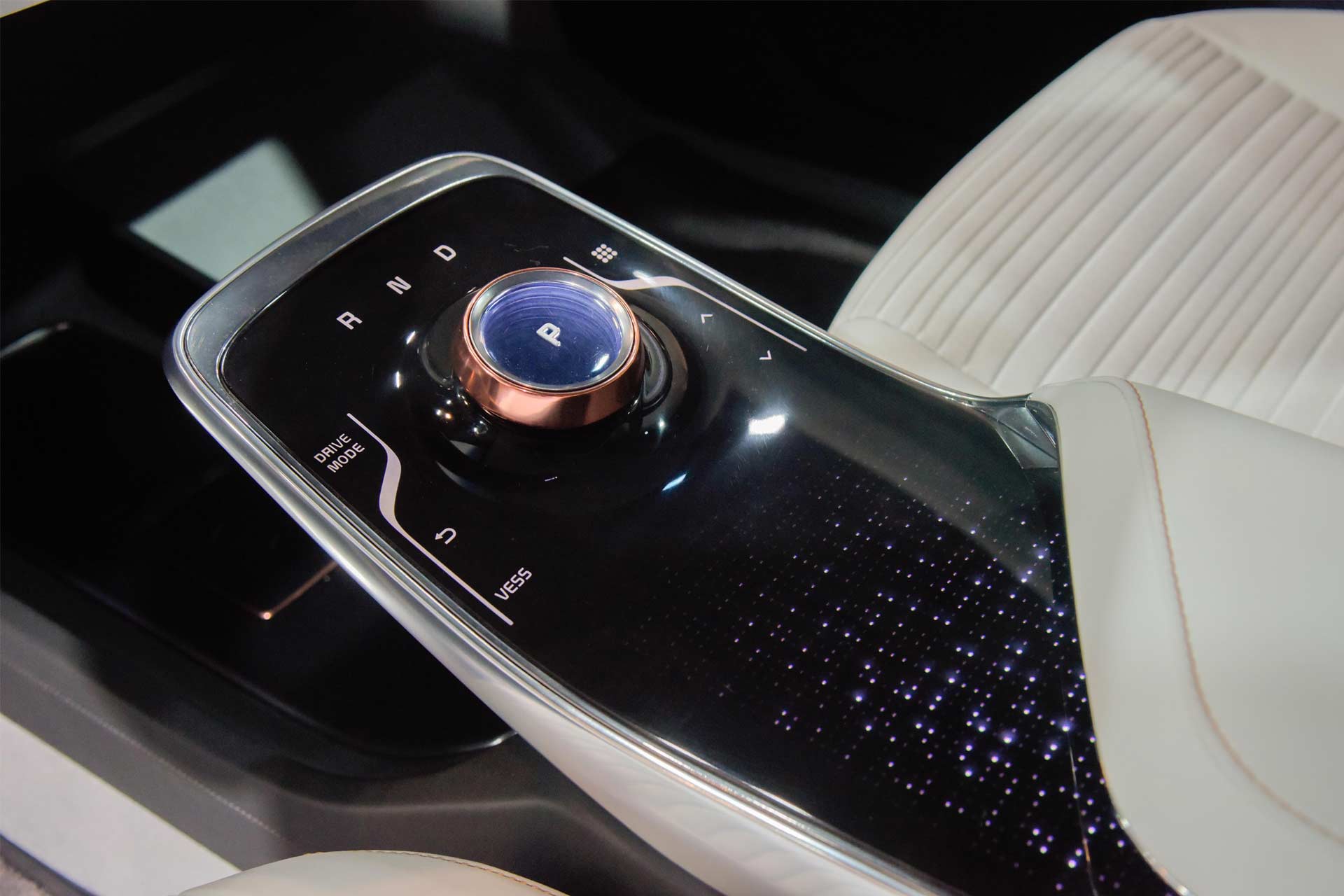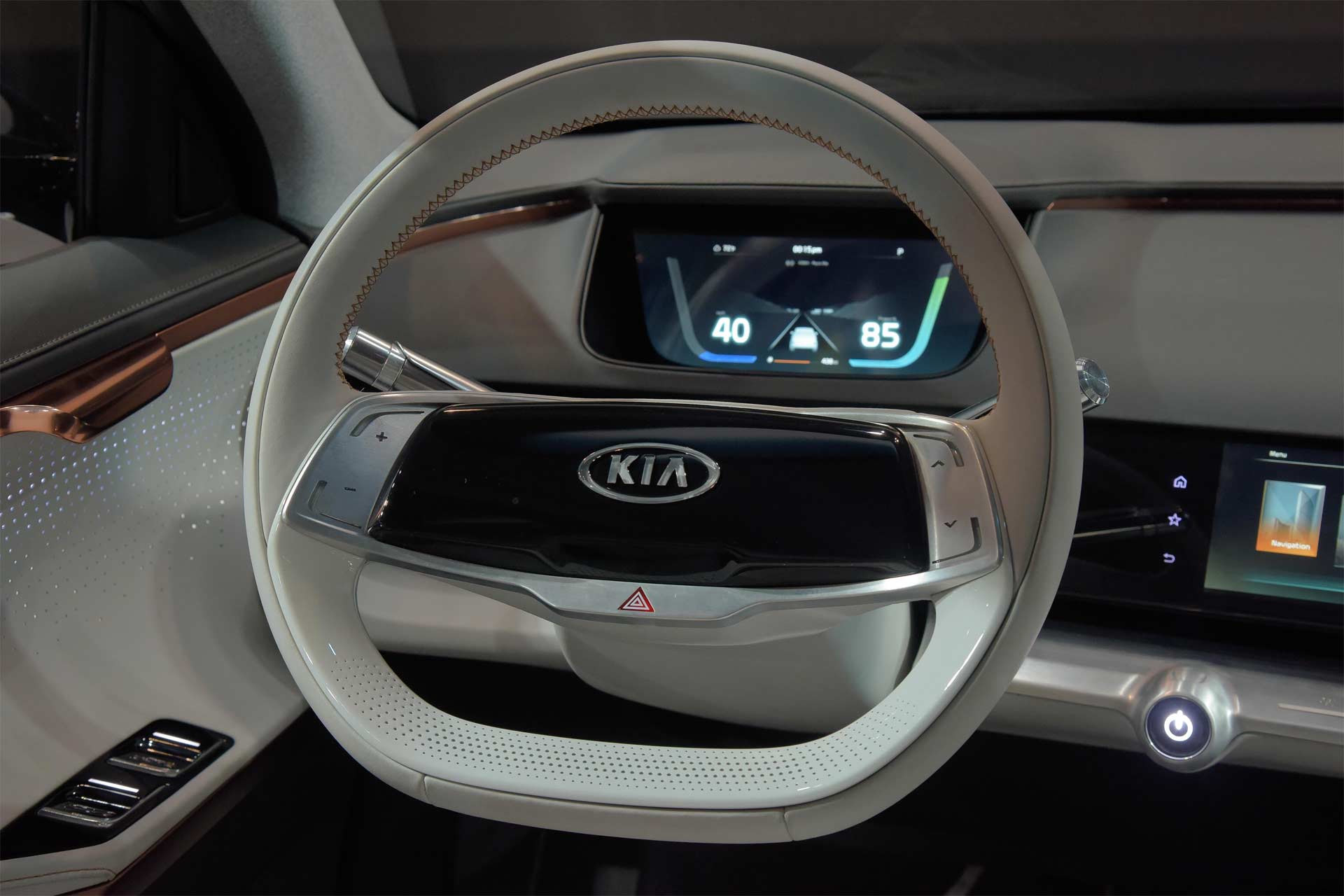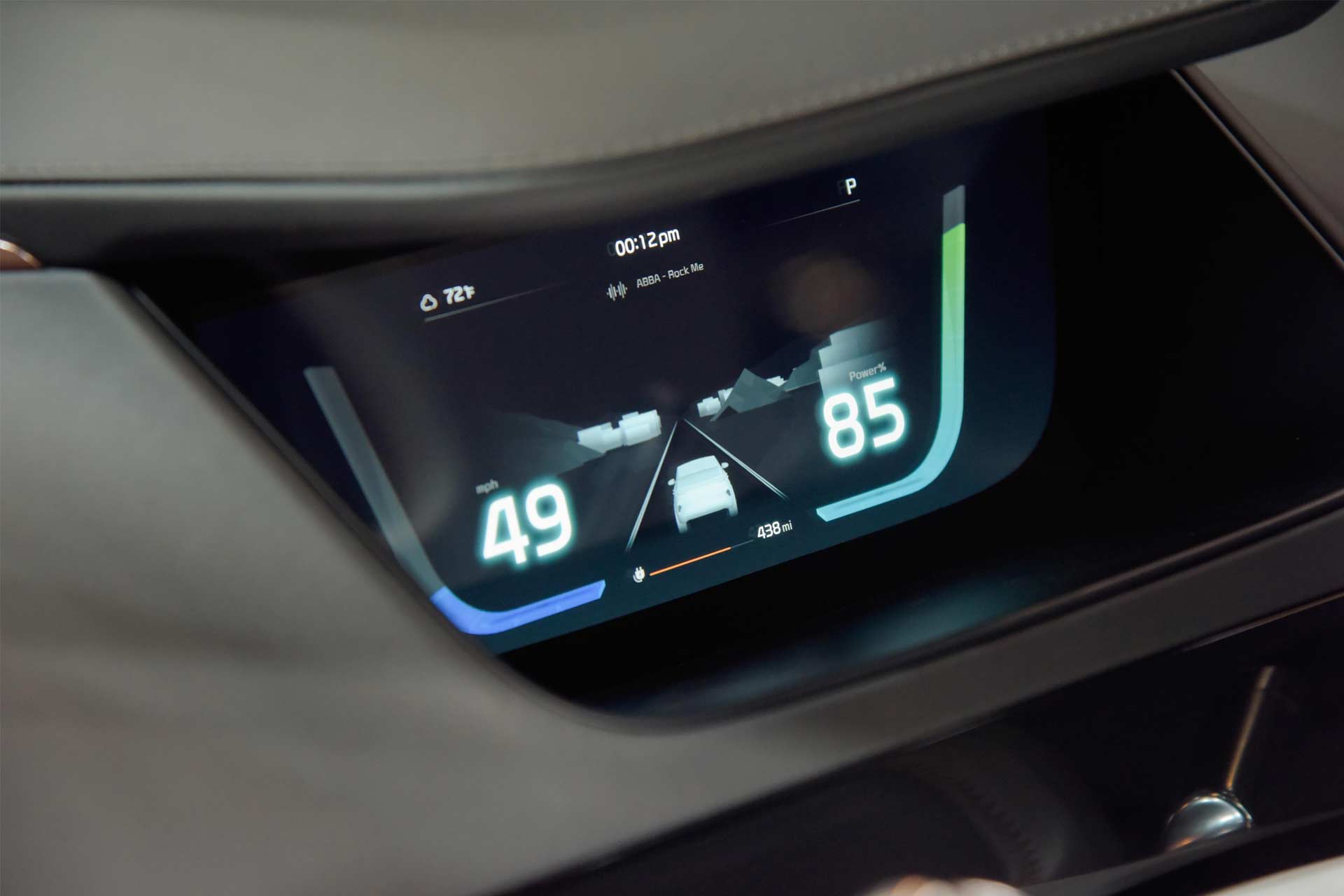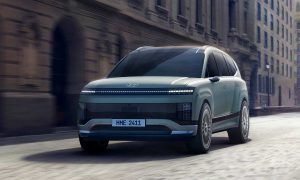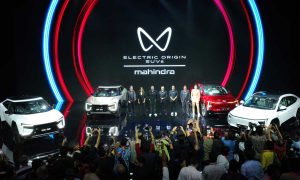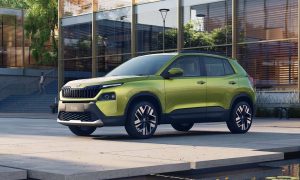Kia aims to have 16 electrified vehicles by 2025, including a fuel-cell electric vehicle (FCEV) in 2020. As part of this strategy, Kia showcased the Niro EV Concept at CES 2018.
The fully-electric version of the Niro is designed at the company’s studio in Korea. The traditional grille is replaced with an interactive display panel, combined with an ultra-slim lamp at the front. The concept draws inspiration from the current Niro, with a modish compact crossover silhouette, elevated body and wide C-pillar. The rear-end has clean and sharp trailing edges allowing air to flow more easily off the back of the car.
The interiors are pretty minimal, typical of a modern EV concept, with a gloss touch display angled towards the driver and a fully digital instrument cluster. Don’t miss the rotary knob on the centre console. The interior gets soft shades of silver, grey and bronze, which according to Kia, enhances the sense of space and calm in the cabin.
Powering the Niro EV is a 150 kW (204 metric hp) electric motor drawing energy from a 64 kWh lithium-polymer battery pack. It gets an estimated driving range of 238 miles (383 km).
The EV gets Active Pedestrian Warning System (APWS) which features a combination of front view cameras, object recognition technology and front speakers. If the system detects a pedestrian or cyclist crossing in front of the car, the speakers sound an alert targeted specifically at that person, warning them of the car’s presence. APWS is matched by the EV’s new interactive lighting system, which offers users and pedestrians a highly-intuitive visual communication with the vehicle, Kia said.
As a part of the strategy, Kia wants to commercialize Level 4 autonomous vehicles in smart cities by 2021.

Leave a Reply
Note: Comments that are unrelated to the post above get automatically filtered into the trash bin.
